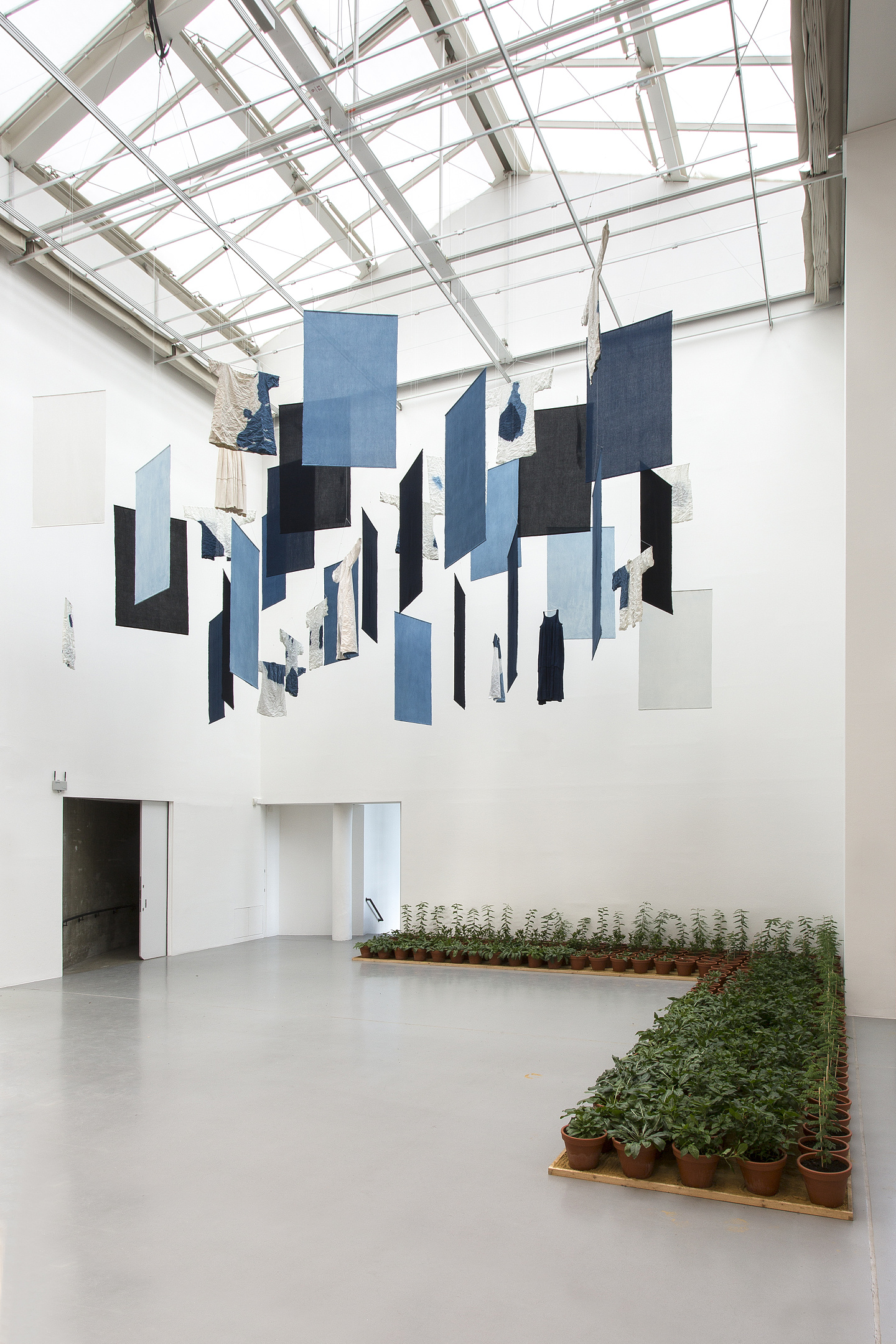Born in Mali in 1967, Aboubakar Fofana left the African continent at an early age for Paris. Fofana’s founding discipline was calligraphy. Fascinated by the sign and the trace, he drew on Western and Eastern traditions to help him master his medium. He wondered if Africa had something similar, and then a series of chance happenings revealed a trove of scripts from across the continent. His first major installation was based around these many written forms, ancient and modern, countering the romantic belief that all African societies belong to oral traditions, and reflecting Fofana’s own spiritual revolution toward Africa as a source of inspiration. And then he remembered a plant he had seen in a forest as a young boy, before his dislocation; a plant that had ordinary-looking green leaves that, when crushed, stained the fingers blue.
Returning to West Africa, he traveled extensively throughout the region, looking for anybody who could teach him to put together a working fermented indigo vat. But the skills had disappeared before he was born, replaced by chemical dyestuffs, leaving only fragments of knowledge. He found much of the information he had been seeking in a library in Paris, pinned into the dry leaves of pre-independence accounts of daily life in West Africa. For many years he went back and forth between his two worlds, taking the pieces of knowledge he found in both places and trying to put them into practice.
Fofana’s tangible output is the result of a spiritual practice based on his fundamental belief that nature is divine, and this is how he shares his practice with an audience. His skill comes from decades of learning to work in harmony with the forces of nature, and his materials and their limitations and innate qualities utterly inform every aspect of his work. His indigo vats are alive. They contain few ingredients and no chemicals—the color comes from the indigo leaves themselves, pounded and dried. Bacteria, carefully nurtured inside the vat, make the indigotin pigment in the leaves accessible and help to reduce it to a form whereby it will oxidize directly onto the fabric.
Fofana’s work embodies a conscious attempt to hold and defend his techniques and materials, and the environment and human philosophies that gave rise to them. For Fofana, the natural world along with our own human ability is where we began, and it is how we will finish.
—Johanna Macnaughtan



